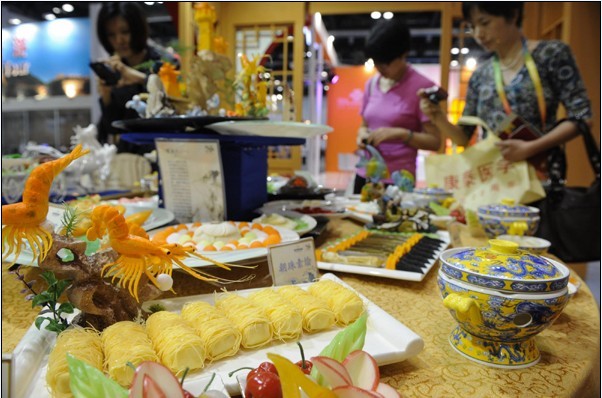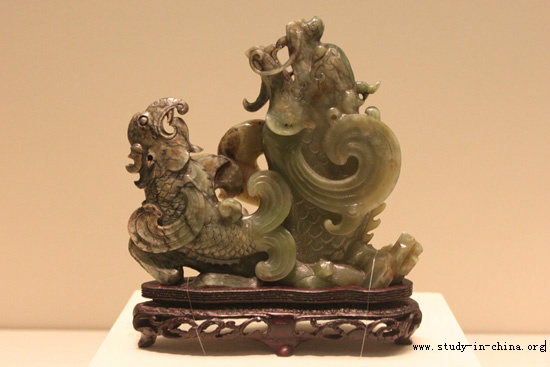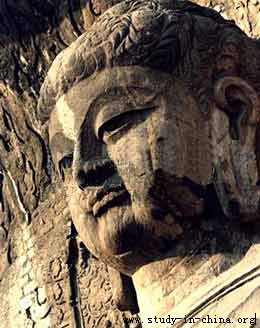| Home > China Feature |
Costly Remedies – Endangered Species and Traditional Chinese Medicine
Having served China for over two millennia, Traditional Chinese Medicine (TCM) is one popular alternative, purportedly free from side-effects. Although TCM's philosophies and treatments for the most part are not scientifically supported, anecdotal testimonies of loyal converts have definitely aided TCM's spread. However, TCM does have its dark side. TCM regularly comes under media scrutiny for its prescription of endangered animal parts. And farming of endangered species – an attempt at conservation – could potentially intrude on animal rights. Equally important is the debate about whether or not endangered animal parts are really necessary to TCM.
What is Traditional Chinese Medicine?
Practiced as mainstream medicine throughout much of China's history, TCM is still an alternative medicine to the rest of the world. Unlike Western medicine, TCM emphasises the functional entities regulating bodily functions (such as breathing and digestion) over anatomy. Bodily well-being depends on the interaction of these entities with the environment, with health being harmony in interaction and disease being disharmony. Initially secular, TCM's philosophical concepts were later absorbed by Taoism. Health is a state of equilibrium where vital energy (qi) flows unimpeded through the body and yin and yang (hot and cold) forces are in balance, otherwise, disease would result. TCM remedies seek to restore qi flows and the yin-yang equilibrium. Diagnoses are made through palpating the pulse and tongue inspection.
Mystical to non-Chinese ears and unlikely to find empirical support as evidence-based medicine, TCM is gaining acceptance in the management of pain, inflammation and chronic conditions, ranging from acne to hypertension and diabetes. Coincidentally, such conditions are troublesome to treat or do not respond well to conventional medicine.
Animal parts as medicinals
Around 13,000 medicinals are used in TCM, most of which are plant elements, together with animal parts and minerals. Animal parts in TCM can seem rather strange, or even bizarre. Typical Chinese medicine shops prominently display an array of cow's gallstones, snake oil, starfishes and dried flying lizards among others. Animal parts consumed are believed to have the properties associated with the animals, accounting for the quirky phenomenon of prescribing animal penises as aphrodisiacs. Animal products also exist in manufactured capsule medicine and supplements.
Traditional Medicine in modern China
TCM is still widely applied in modern China, especially in the coastal regions like Guangzhou, where it accounts for an estimated 40% of all medical treatments. In big cities, impatient urbanites favour comparatively instantaneous pharmaceuticals over slower-acting traditional formulas. Yet, on the other hand, adverse effects arising from consumption of certain Western medicines have been coming under the harsh media glare with alarming regularity. Most recently, the use of Azithromycin, an antibiotic commonly prescribed for ear infections and pneumonia, was linked to an increase incidence of death. Practitioner and proponents increasingly eschew chemical-based pharmaceuticals for their side-effects and contribution towards organ damage.
In Chinese herbology, medicinals categorised as "superior" are applicable to multiple diseases through serving to restore balance in the body. China's growing upper-class can now afford to look towards the regular consumption of rare "superior" medicinals. TCM chains and upmarket supermarkets have sections dedicated to well-packaged birds' nest and cordyceps, among other highly-prized medicinals, for gifting purposes. China's current pace of growth and aging population is likely to accelerate growth in demand for medicinals once considered luxuries.
Endangered species in Traditional Chinese Medicine
In the days Chinese medical tomes came into existence, conservation of species was not yet a cause for concern. Today, however, rising demand for rare medicinals coupled with destruction of habitats put certain animal and even plant species at risk. Moreover, the worldwide trend towards alternative medicine shows no sign of abating as populations and wealth increases and chemical remedies increasingly fall out of favour.
Banned medicinals of animal origin from tigers and rhinoceros are supplied to the blackmarket through poachers. Here are some of the endangered species from which highly-coveted medicinals are derived.
1) Tigers
Tiger bones are coveted for strengthening muscles and bones and relieving pain and epilepsy – a major contributing factor putting tigers on the endangered list. China has banned the domestic trade of tiger bones since 1993. Tiger bone has also been removed from TCM's official pharmacopoeia, being substituted with the bone of the mole rat and other alternatives. Unavailable legally within China, tiger bones can still be obtained in medicine shops in Chinese diaspora communities.
However, with thousands of tigers being raised on farms in China, the government is increasingly pressured to lift the ban on trading parts from farmed tigers.
2) Rhinoceros
Rhinoceros horns are a popular remedy for fever, convulsions and delirium. Despite laws to protect this critically endangered species, poaching still goes on, driven by the Asian market. Possibly, captive breeding could halt the decrease in rhino numbers in the world.
3) Black Bear
Whether for conservation or for personal gain, efforts have been made to obtain the desired animal parts while sparing the animal. A classic example is bear bile, previously obtained from bears killed before winter. Bear bile treats a variety of ailments, from liver problems to headaches.
Since the Chinese Ministry of Health stepped in, bear bile has been harvested on "bear farms" – a more profitable venture than killing bears. Caged under cruel conditions and permanently fitted with a catheter leading through a hole in the abdomen connecting to the gallbladder, bears could live under excruciating pain. While international attention has resulted in the substitution with gallbladders of butchered cattle, bear bile demand in China has given rise to more than 12,000 black bears being held in farms across China.
4) Deer
Deer antlers or deer velvet is prescribed in TCM to increase "spiritual and physical powers". Commonly consumed before winter to stave off flus, antlers are sliced thinly and boiled with other herbs like ginseng. While not all deer species are endangered, certain species, like the Tibetan Deer are poached for their antlers.
5) Musk Deer
Besides being used in TCM preparations, musk deer scent glands are an ingredient in perfumes and Western homeopathic medicine. In Chinese medicine, musk serves to improve circulation, treat infections and abdominal pain. Demand far outstrips supply, although China claims to have successfully implemented farming of this species. Alternatives include the muskrat and certain species of the civet cat, as well as synthetic alternatives.
6) Seahorses
Seahorses are a traditional treatment for kidney and circulation problems, as well as impotence, owing to their phallic shape. Ironic, considering that in this species, the male carries the offspring. While not yet endangered, seahorses are already overfished and absent from some reefs in the tropics. Alarmingly, international restrictions on the seahorse trade are currently non-existent and the highly monogamous seahorse does not lend itself to captive breeding.
7) Plants Species
Even plant species are not exempt from this danger and the result is possible loss in biodiversity. Overharvesting has led to the depletion of natural sources of wild ginseng and certain species of liquorice roots.
The future of conservation of species threatened by TCM
The use of endangered animal and plant parts is deeply engrained in TCM's heritage and can hardly be expected to change overnight. Even among practitioners, the use of endangered animal parts is controversial but most would agree that alternatives exist. As a medical system emphasising the body's oneness with nature, practitioners have a moral obligation to assist conservation efforts by actively seeking out and prescribing alternatives. Dialogues between TCM practitioners and conservation groups are already an encouraging sign.
The Chinese government has already banned the trade of certain endangered animal products, such as those from tigers, but a substantial blackmarket still exists, driven by the noveaux riches. Also, there is little governmental concern for animals raised in captivity. The international community also has a part to play in limiting or even banning the trade of endangered animal products outside China while encouraging TCM bodies to research alternatives. Eco-journalism could harness the media as a catalyst for change.
Ultimately, responsibility should fall on the shoulders of consumers who drive demand. Most are either ignorant of alternatives or persist in consuming endangered (and costly) animal parts as a show of status, fuelling the blackmarket. Hopefully, as animal conservation groups become more active and more media attention is turned on conservation efforts, consumers worldwide can make informed decisions. Outside of China, the U.S. is the second-largest market for endangered animal products.
Art
 more
moreChina Beijing International Diet ...
Recently, The hit CCTV documentary, A Bite of China, shown at 10:40 ...

Exhibition of Ancient Chinese Jad...
At least 8,000 years ago, Chinese ancestors discovered a beautiful...

Longmen Grottoes
The Longmen Grottoes, located near Luoyang, Henan Province, are a tr...

Custom
 more
moreWeb Dictionary
Martial Arts
Tai Chi Master Class Held in Moscow
MOSCOW, June 15, 2016 (Xinhua) -- Students learn from Shaolin ...
Celebriting 70 years' efforts in restoring Mogao...
Work is being carried out at the restoration site of cave No 98 a...
Hong Kong Children's Symphony performs in Seattle
Under the theme of Tribute to the Golden Age, a concert featuring a ...





 print
print  email
email  Favorite
Favorite  Transtlate
Transtlate 








